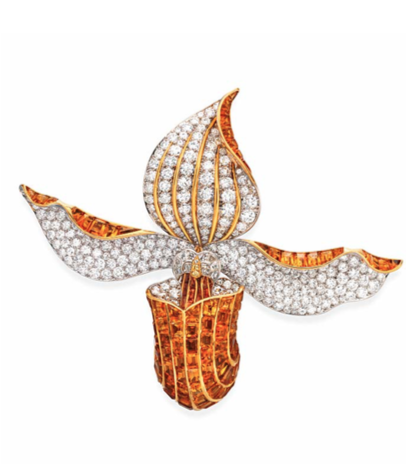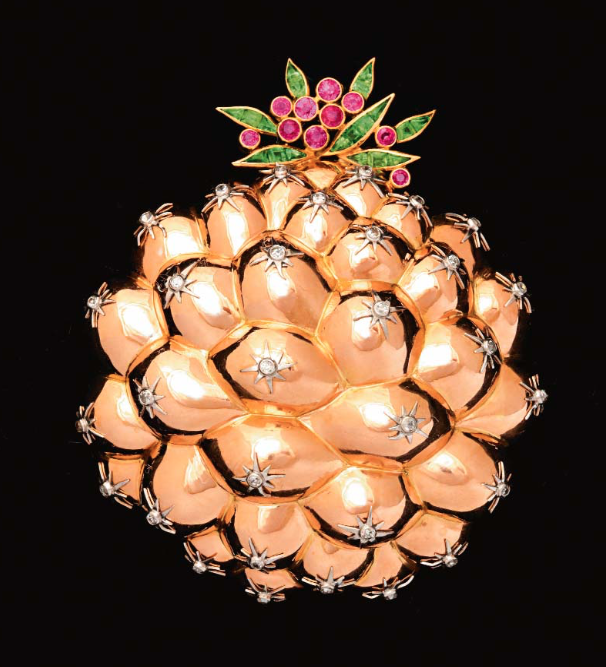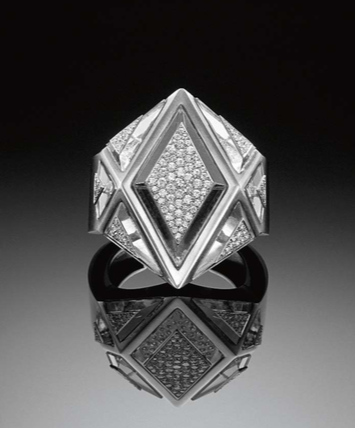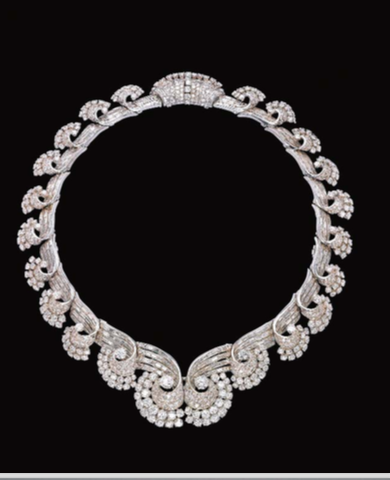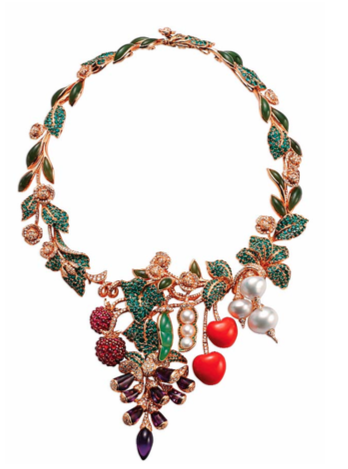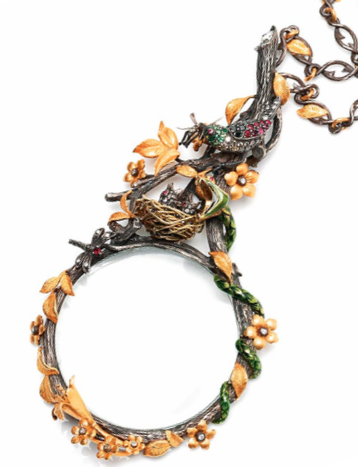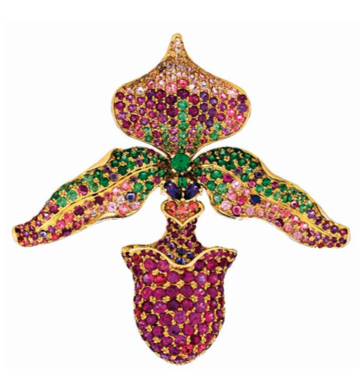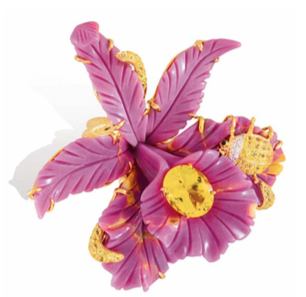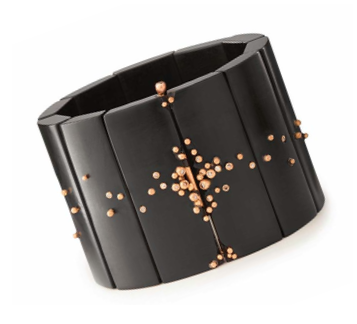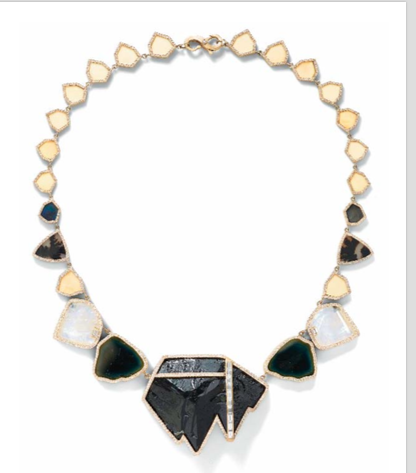The Book That Every Jewelry-Obsessed Woman Should Own
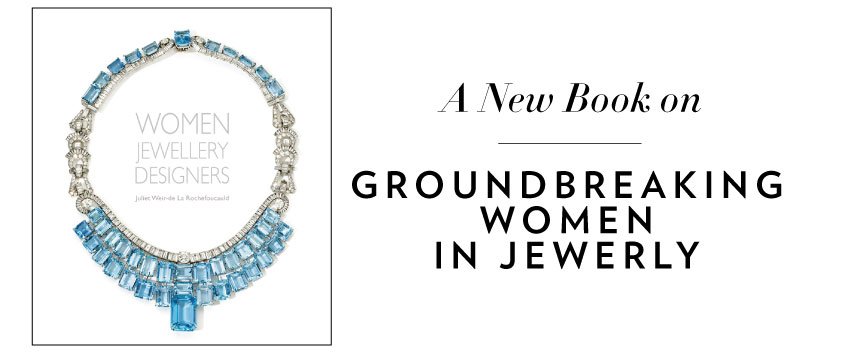
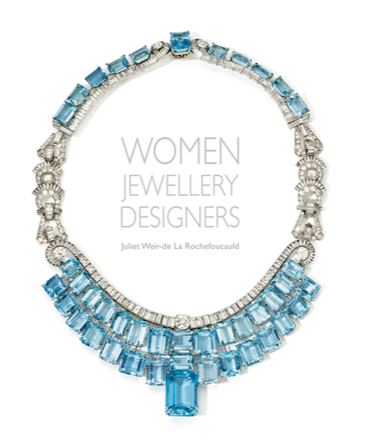
I have long anticipated this jewelry tome written by Juliet Weir-de La Rochefoucauld (ACC Artbooks, September 15, 2017) ever since I heard it was in the works. Judging from the title Women Jewellery Designers, you immediately understand that the author (who also penned Twenty-First Century Jewellery Designers: An Inspired Style) is going to delve into the rich history of the famed and not so famed women who first tore down the boundaries for females to enter what was ironically a male-dominated art and industry. And she does just that and goes on to explore how these groundbreaking jewelers made it possible for the talented women designers to come into their own, inspire others, grow in numbers and thrive throughout the 20th into the 21st centuries.
In her introduction, Weir-de La Rochefoucauld writes what many of us who have covered jewelry have thought, “It has always surprised me that throughout history the world of jewellery making has been dominated by men, even though it is women who on the whole wear their creations. Certainly, there have been periods in the past when men have been equally adorned but these have only been fleeting moments in the time-scale of history.”
The jewelry-packed 306-page book with over 500 illustrations and original sketches documents not just the liberation of creativity and inspiration behind the actual designs but the historical, social and cultural context and times in which collections were launched and the stories behind what prompted many of their creations.
The narrative begins with Arts & Crafts jewelers in Britain, Europe and North America but swiftly moves into Part 1 which covers the time period between the two World Wars and the works of luminaries and icons who influenced future generations including Jeanne Boivin who took over her husband René Bovin’s business when he passed away and hired women designers such as Suzanne Belperron, and later Juliet Moutard who both had very different styles but conveyed what was happening during the 1920s-40s in Paris. They brought a modernity to jewelry, were as revolutionary as their male counterparts and also created pieces that were comfortable to wear and conformed to the feminine form.
- OP Moutard for Boivin: Orchid brooch – citrine, yellow diamond, diamond, platinum, yellow gold, courtesy of Christies Inc.
- Moutard for Boivin: Pineapple brooch, c.1940 – ruby, peridot, diamond, platinum, yellow gold, Courtesy of Pat Saling NYC
Belperron went on to create her own collection with pieces that range from ultra geometric and three dimensional during the Art Deco Movement, working in platinum, rock crystal, gold and diamonds and went on to design more fluid silhouettes with the use of bold gemstones.
- Belperron for B.Herz: Geometric bracelet, c.1934 – rock crystal, diamond, platinum This was owned by Diana Vreeland, Image courtesy of Belperron
- Belperron for Boivin: Spire (Scroll) necklace, c.1935 – diamond, platinum. Image courtesy of Christies Inc.
And of course there was Coco Chanel who changed the face of fashion and along with this changed the way a woman looked at her jewelry as part of her her personal style. She started with faux jewels and went on to create her first fine collection the ‘Bijoux de Diamants exhibition of 1932, which was a major sensation. The author writes more of the story surrounding the launch of this collection which I had previously written about in an article about the most influential women in jewelry throughout the 20th century (here).
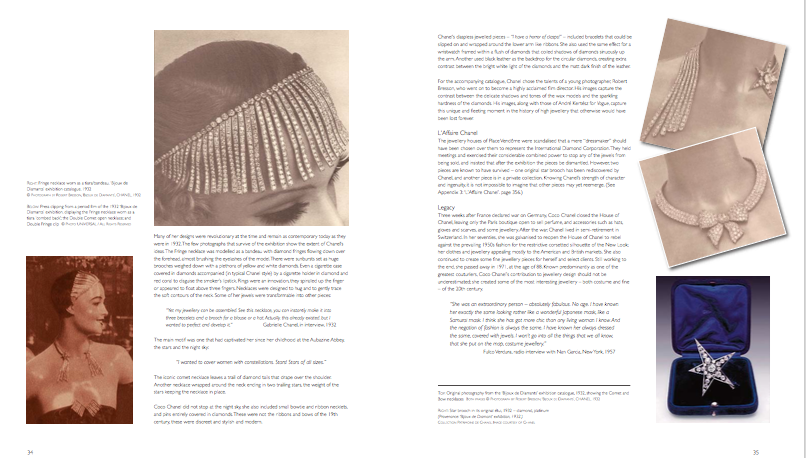
Spread from Women Jewellery Designers of Chanel’s ‘Bijoux de Diamants collection. Photo courtesy of ACC Artbooks
And while in Paris, Weir-de La Rochefoucauld tells the back-story and gives us the scoop on all of the designs that sprung from the fertile imagination of Jeanne Toussaint, who went to work for Louis Cartier and eventually became creative director. Toussaint oversaw the jewelry that was designed throughout the 1930’s including all of the panther and tiger creations as the well as Cartier’s Tutti-Frutti Indian-inspired jewels. Her clients included but were not limited to socialites and style icons such as Daisy Fellowes and The Duchess of Windsor and stars such as Grace Kelly and Marlene Dietrich.
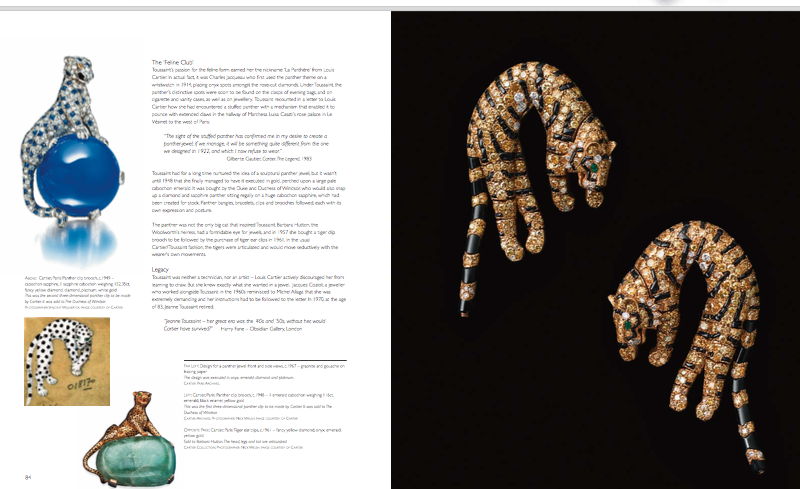
JeanneToussaint’s Panthers and Tigers from The Duchess of Windsors Collection From A Spread in Women Jewellery Designers. Photo of spread courtesy of ACC Artbooks
There are many more jewelers to discover in this chapter—those whose work was widely known for the houses they designed and those whose names were out in the limelight.
Part 2 encompasses the period after WWII through the 1980’s and focuses on women who once again changed the feeling of jewelry to mesh with the times they were living in and the fashions being worn. Starring designers in this section include Elsa Peretti, Angela Cummings, Marina B and Paloma Picasso for Tiffany & Co. Not to mention the women behind the different styles of the streamlined silhouettes of Georg Jensen—artists that included Torun Bülow-Hübe and Nanna Ditzel.
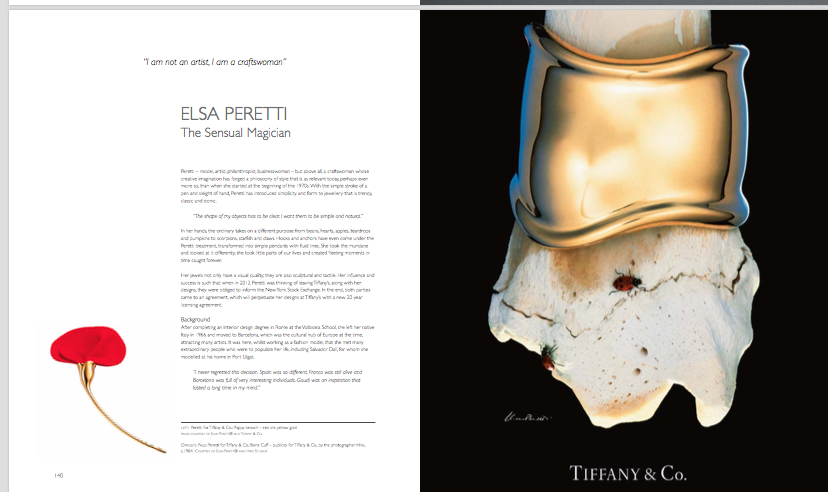
Spread on Elsa Peretti in Women Jewellery Designers. Spread Courtesy of ACC Artbooks
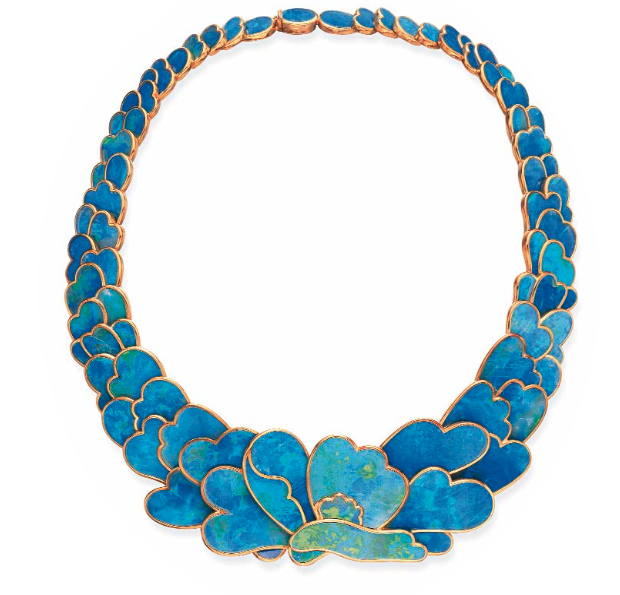
Orchid necklace, c.1985-87 – opal inlay, yellow gold, courtesy of Christies Inc.
Part 3 -proves that this glorious industry is no longer the domain of male jewelers and moves from the 20th century into present times with some of the most exuberant, wildly imaginative and diverse range of women designers who all have their own distinctive aesthetics. They create jewelry collections that can range from figurative to gem embellished to natural and organic, offer options and design pieces that complement a woman’s features, allowing her to sparkle among sensational jewels.
THE FLOWER GIRLS
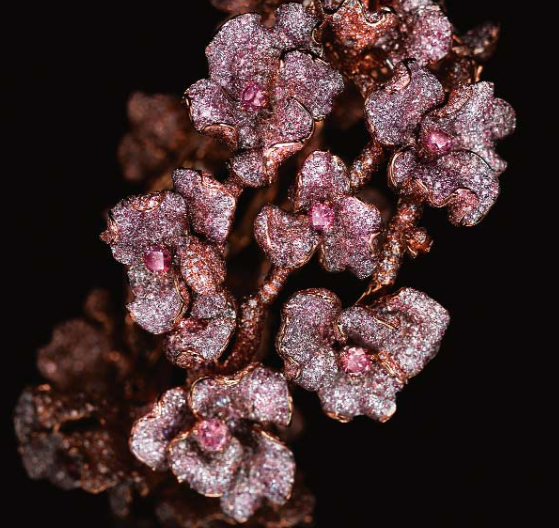
Neha Dani: Amarante bracelet, c.2015 – pink and deep purple-pink fancy colored diamonds, rose gold
- Victoire de Castellane necklace ofpearl, red coral, ruby, amethyst, cultured pearl, diamond and yellow gold. Courtesy of Dior Fine Jewelry
- Garden motif looking glass in silver and gold with diamonds. Courtesy of Aida Bergsen
- Lady slipper orchid in multi-colored gemstones. Photo courtesy of Paula Crevoshay
- Lydia Courteille orchid ring, c.2013 – phosphosiderite, yellow tourmaline, yellow sapphire, diamond, yellow gold. Courtesy of Lydia Courteille
Designers in this section include but are not limited to Victoire de Castellane, Alexandra Mor, Neha Dani, Paula Crevoshay, Carla Amorim, Monique Péan, Michelle Ong, Kara Ross, Lydia Courteille, Suzanne Syz, Katey Brunini, Luz Camino Aida Bergsen, Anna Hu, Barbara Heinrich, Jacqueline Cullen and Cynthia Bach.
For any woman who loves and wears jewelry—which I am assuming are all of my readers—this book is a must have—as much as the pair of earring or cuff bracelet you have been coveting.
- Jacqueline Cullens Whitby Jet and gold cuff bracelet. Courtesy of Jacqueline Cullen
- Monique Pean Lahnse necklace – black tourmaline crystal, blue tourmaline, moonstone, dendritic agate, spectrolite, cream fossilised walrus ivory, white diamond, recycled white gold Courtesy of Monique Pean
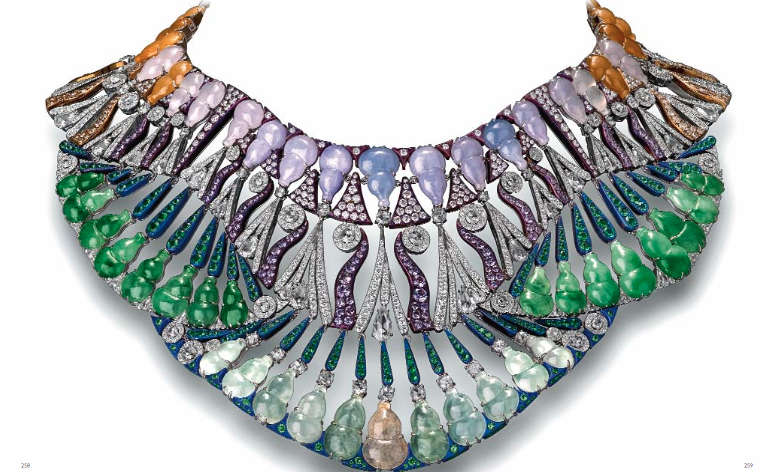
Michelle Ong’s Glowing Jade and Gems necklace – jade, emerald, purple sapphire, garnet, brown diamond, white diamond, titanium, white gold A gourd in Chinese culture, a gourd acts as a charm, which is believed to protect the wearer from illness and bad spirits.
All photos with and without specific credits are courtesy of Women In Jewellery, Acc Artbooks

